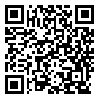BibTeX | RIS | EndNote | Medlars | ProCite | Reference Manager | RefWorks
Send citation to:
URL: http://rjms.iums.ac.ir/article-1-3783-en.html
Background: Modeling is
one of the most important ways for explanation of relationship between
dependent and independent response. Since data, related to number of blood
donations are discrete, to explain them it is better to use discrete variable
distribution like Poison or Negative binomial. This research tries to analyze
numerical methods by using neural network approach and compare it by classic
statistical methods to choose better way to predict the number of blood
donations.
Methods: In this
study, data were collected from blood donors at the blood center of the
Sharekord and then four methods were compared by neural network approach. These
methods are: Poisson regression model and its zero inflated, Negative binomial
models and its zero inflated.To learn neural network approach, (BFGS)
Broyden–Fletcher–Goldfarb–Shanno algorithm was used. To choose the best model,
mean-square error (MSE) was used. The best network structure in teaching data was chosen
and neural network approach resolution was compared by them, to choose the best
approach for prediction the number of blood donations.
Results: The MSE for
Poisson regression model, Poisson regression with zero inflated, negative
binomial and negative binomial with zero inflated are respectively 2.71, 1.54,
0.94 and 1.01. For neural network approach 14:17:1 with activation function of
hyperbolic tangent in hidden layer and output layer 0.056 is achieved.
| Rights and permissions | |
 |
This work is licensed under a Creative Commons Attribution-NonCommercial 4.0 International License. |





